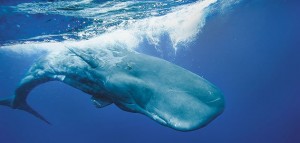Human beings have always had an amazing relationship with water. Aside from the obvious need to drink it to survive, humans depend on the water as a source of food, to travel over long distances, and as a source of recreation. From the recreational side, swimming has slowly evolved from a survival mechanism to many different aspects; the tendency for some recreational swimmers and snorkelers to take a big gasp of air and dive underwater has led to the sports of free-diving and scuba diving. Free-diving is a form of underwater diving that relies on divers’ ability to hold their breath until resurfacing, while scuba diving utilises a compressed air system to allow divers to actually breathe underwater. While the technology surrounding scuba diving is a fairly recent invention, and the sport of free diving has improved with modern equipment, you may be surprised to learn that these two methods of voyaging underwater—breath-holding and taking an air supply—are millions of years old. In this article, we’ll examine some animals that are able to perform underwater feats that humans could only dream of.
To begin, let’s take a look at some of the natural world’s champion free-divers. While many animals such as otters, penguins, seals, and cormorants take to the water and dive down to get food, there is a standout in the ability to dive down and chase food: The Sperm Whale. Sperm whales are known to dive as deep as 3,280 feet (1,000 meters) in search of squid to eat. These giant mammals must hold their breath for up to 90 minutes on such dives, and the physics behind this feat is truly breath-taking (no pun intended!). Their ribs are bound by loose, bendable cartilage, which allows the rib cage to collapse to some degree under high pressure that would easily snap our bones. A whale’s lungs can also collapse safely under pressure, which keeps them from rupturing. When the lungs collapse, the air inside them is compressed, maintaining a balance between inward and outward pressure.
In the world of scuba, it is very easy to think that humans are alone in the ability to take an air supply underwater and use it to breathe off of. However, there are a couple of creepy crawlies that have been doing just that for millions of years. The diving bell spider, or water spider, is the only species of spider known to live almost entirely under water. These spiders use their silk to create webs shaped live diving bells, and routinely make trips to the surface to replenish the air supply. While not actually scuba diving in a sense, the spiders’ ability to manage a breathing system underwater is truly remarkable.
In terms of the closest thing in nature to actual scuba diving, look no further than the water beetle. Since their discovery, scientists assumed that, like fish and many other aquatic insects, diving beetles had gills that allowed oxygen in the water to pass into the circulatory system. It has been recently discovered that these insects bring their oxygen supply with them, much like we humans do. Thanks to their size and their streamlined shape, predaceous diving beetles can actually drag air underwater with them thanks to the power of surface tension. The beetles use their wings to trap air from the surface and carry it with them when they dive into the streams and lakes they live in. The air provides them with the oxygen they need while they hunt for food. One depleted, they return to the surface for a refill.
So the next time you enter the water for a snorkel, free-dive, or scuba dive, remember that from an evolutionary standpoint, you’re in good company!

